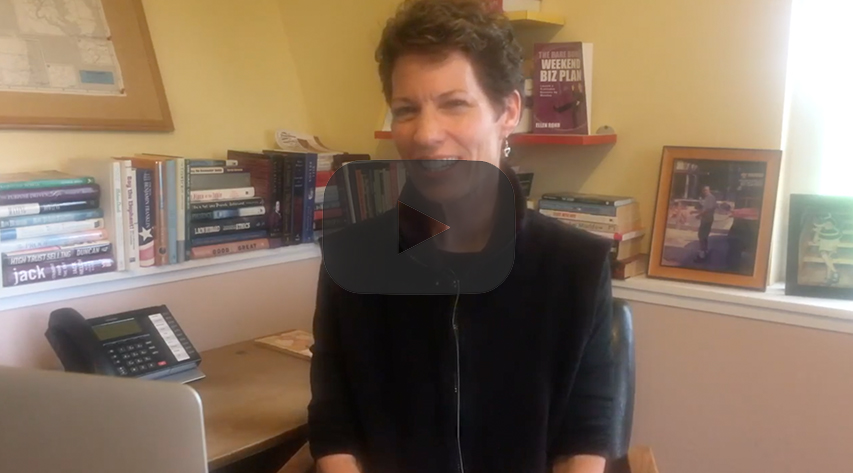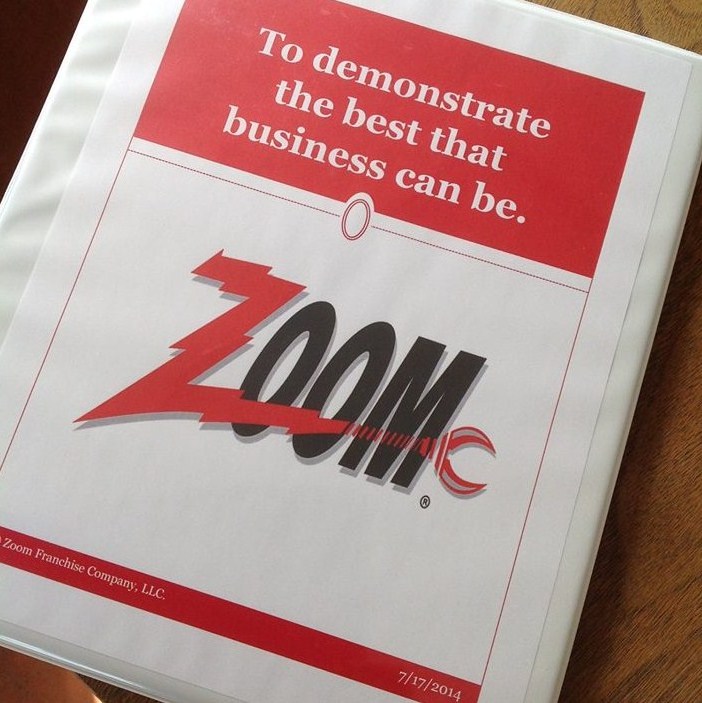
Bueller?
Your meetings don’t have to devolve into gripe sessions, and a waste of billable hours. You can do better. A tight, short, focused meeting can be an opportunity to communicate, to get on the same page, to teach something and learn something. If you don’t have an agenda for the meeting, it can descend into chaos or boredom. (Bueller…Bueller? Anyone?) It’s easier to edit than to create from scratch, so here’s a sample agenda for a company-wide meeting:
- Read the company mission statement. This is a gathering of the troops. Lead them to victory! Share your vision of the company. Insist that each employee memorizes the company mission statement. You could offer $5 to anyone who can recite it on the spot.
- Have a Topic and a “Guest Star.” Invite someone to introduce the topic and share insights. This could be a team member, a friend who is a business owner, or a video clip! Here’s a Six Minute Meeting I put together for Todd Liles of Service Excellence Training. I love his concept: Deliver solid content in six minutes and create a meeting that matters. (Thanks, Todd for asking me to play. In my Six Minute Meeting I focus on business planning. Owners are well served to have a Biz Plan. Ambitious employees could benefit by putting one together, too. Check it out!)
 Discuss Big Wins of the last week and acknowledge the winners. Make a big deal out of great performances. If you have posted the information on the shop wall, everyone already knows the top salesperson or contest winner. Still, make a formal presentation to the weekly winners. Read glowing customer response card information. Did someone do a particularly nice job with an angry customer? Act out the ‘save’ with the responsible employee. Clap, stand up and cheer, crown the winners with a tiara made of nail strips. Think Golden Globe. Think Oscars. Think Harvard Hasty Pudding.
Discuss Big Wins of the last week and acknowledge the winners. Make a big deal out of great performances. If you have posted the information on the shop wall, everyone already knows the top salesperson or contest winner. Still, make a formal presentation to the weekly winners. Read glowing customer response card information. Did someone do a particularly nice job with an angry customer? Act out the ‘save’ with the responsible employee. Clap, stand up and cheer, crown the winners with a tiara made of nail strips. Think Golden Globe. Think Oscars. Think Harvard Hasty Pudding.
- Go over a specified section of the Employee Manual. Read the sections of your Employee Manual one by one, week after week. Take turns reading. You’ll KNOW that everyone has read the whole thing. Make your case for the written procedures. Discuss. Apply the acid test…do these procedures help or hinder developing great relationships with your customers? Don’t be afraid to change what doesn’t work.
- Offer a hypothetical Sales scenario. Role Play different approaches to the situation. Encourage someone to impersonate a real-life customer they’ve encountered, and reward the person that does the best job winning him over.
- Introduce a new product or service. Discuss the features and benefits of the new item. Have volunteers give a 30 second spiel on the item, and what’s in it for the customer. Lay out the policies regarding price, and any special promotions.
- Employee announcements. Offer best wishes for birthdays, anniversaries and new babies. Make sure newcomers are recognized and welcomed. Start a fun initiation tradition for new employees, like donning the company jacket. Or a high-fiving round of introductions.
- Wrap up with a contest update. It’s a nice way to send everyone out the door. Contests are great. But it takes an effort to keep the energy up. Have long term and short-term contests. Report on the status of a long-term contest. You could also run a mini-contest every day. Most customer compliments wins. Or highest average sale. Most projects sold. Involve every department in some kind of game. Most service calls scheduled. Quickest truck re-stock.
More tips for Meetings that Matter:
- Start and stop on time. Don’t be late, and do not tolerate latecomers. I’ve heard of locking the door when the meeting begins. Those who miss the meeting are responsible for finding the information they missed, and are written up.
- Invite the right people. A company-wide meeting is a great idea, once a month or once a quarter. Otherwise, short, specific meetings with just those folks who need to be in on it.
- Use stories to make a point. Lectures fall on deaf ears. A real life story – yours or someone else’s – can be spellbinding. Mine your past for appropriate stories. You can also read a well-written passage from a book to highlight a lesson. Nice touch.
- Don’t take more than an hour. As the leader, prepare ahead of time. Don’t ramble and waste their time. Work on your communication skills. Use the right words, so you can use fewer words.
- Have a written agenda. At least two days before the meeting, post the meeting agenda. You can send an e-mail or memo, or tack the agenda on the company bulletin board. Some folks just can’t participate in a discussion unless they have thought about it, and slept on it. Stay on the agenda. If someone goes off on a tangent, call TIME OUT. You can put the topic on next week’s agenda, or discuss it in private after the meeting.
- Hang in there! Don’t quit having meetings because no one is participating. They are waiting for you to give up! Hang in there. Ask open-ended questions…what, why, how. Call on people to share their thoughts. In time, they’ll chime in.
- Pay people for their meeting time. If you don’t take meeting time seriously enough to pay people for it, they won’t take it very seriously either. Just pay them, and save yourself the inevitable headaches associated with not paying them for it. They’re worth it. Build the cost into your overhead, like any other cost.
- No matter the topic…safety, operations, technical training…remember the big game is SALES. Figure out how to tie it all together.
- Keep the teaching technology simple. If you are a wiz at Power Point, go ahead and use the technology. As a rule of thumb, the apparatus used to deliver the learning shouldn’t be more difficult to master than the subject being taught. Do mix up your presentation techniques in some way…video, lecture, reading, role-playing, flip charts, question and answer. This keeps it interesting, and makes the information more accessible to people with different learning styles.
- NEVER EVER discipline in a group setting. You have been guilty of this, I know. We all have. But it doesn’t work…in fact it’s downright destructive. Suppose you have had it up to here with employees showing up late for work. The workload has been heavy, so you’ve ignored the problem. Today, you decide, you’ll lay down the law. You announce in your company meeting that the tardiness has GOT TO STOP. You get all worked up, and red in the face. You are yelling about how unprofessional it is, and how you are going to start writing people up for tardiness. Well, here’s what your employees are thinking…
- The folks who show up late assume that everyone must be late…so, no big deal. They’re off the hook.
- The folks who show up on time lose all respect for you. They’ve been compliant, and they don’t need to listen to this lecture about tardiness. And they don’t get why you haven’t been writing people up for being late.
All policy violations should be dealt with immediately, and privately, with the offender. Even if everyone at your company is in violation of a particular policy (not likely) discuss it in private with each individual. I once had a job where we referred to the weekly meeting as the weekly beating. Ouch. Not good.
- Teach! That’s what you get to do in a good meeting. Teach them about your vision, your hopes and dreams. Teach them what they need to do to succeed in your wonderful company. Teach them how to win, make a sale, do their job.
- Follow up on all action items. Keep a running list of the things you “green light” in the heat of the meeting. Do them, or delegate them. Each team member writes down their own to do’s. You update due dates in your Calendar.
Want to be a really great teacher?
- The BEST book on the subject is Dan Holohan’s “How To Teach Technicians Without Putting Them To Sleep.” The title says it all. Stop by www.HeatingHelp.com to order.
- Check out Todd Lilles and the rest of the Six Minute Meetings line up at www.ServiceExcellenceTraining.com Fun and helpful “Guest Stars” and terrific meeting topics!
















